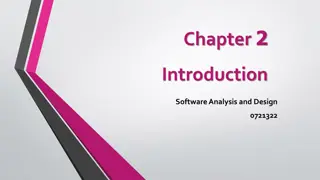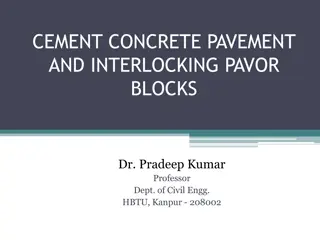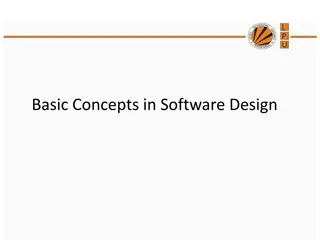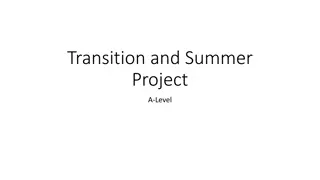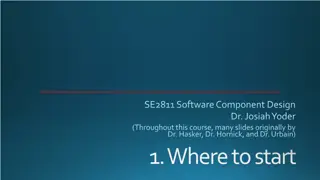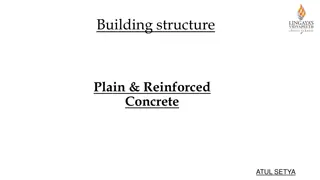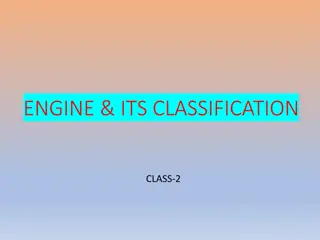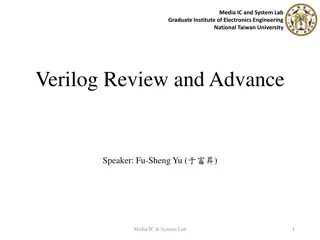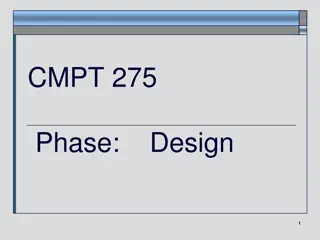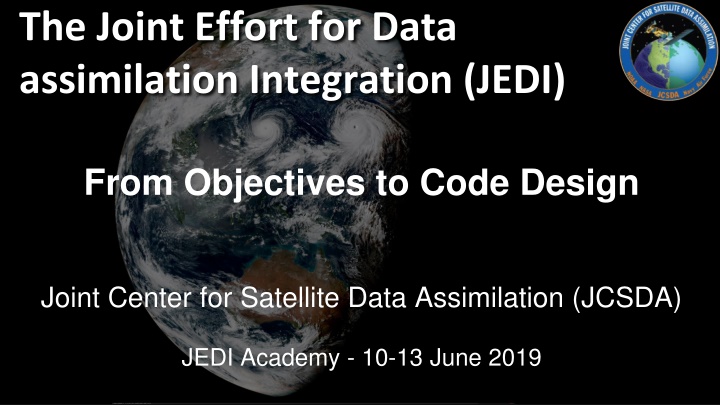
Effort for Data Assimilation Integration: JEDI Objectives & Design
Explore the Joint Effort for Data Assimilation Integration (JEDI) from objectives to code design, focusing on unified data assimilation systems and basic building blocks. Learn about OOPS analysis and design, variational data assimilation, and key concepts in implementing data assimilation methods effectively.
Download Presentation

Please find below an Image/Link to download the presentation.
The content on the website is provided AS IS for your information and personal use only. It may not be sold, licensed, or shared on other websites without obtaining consent from the author. If you encounter any issues during the download, it is possible that the publisher has removed the file from their server.
You are allowed to download the files provided on this website for personal or commercial use, subject to the condition that they are used lawfully. All files are the property of their respective owners.
The content on the website is provided AS IS for your information and personal use only. It may not be sold, licensed, or shared on other websites without obtaining consent from the author.
E N D
Presentation Transcript
The Joint Effort for Data assimilation Integration (JEDI) From Objectives to Code Design Joint Center for Satellite Data Assimilation (JCSDA) JEDI Academy - 10-13 June 2019
JEDI: Motivations and Objectives Develop a unified data assimilation system: - From toy models to Earth system coupled models - Unified observation (forward) operators (UFO) - For research and operations (including O2R2O) - Share as much as possible without imposing one approach (one system, multiple methodologies/configurations) Objective of this talk: How is such a system designed? Y. Tr molet, JCSDA JEDI
Basic Building Blocks Y. Tr molet, JCSDA JEDI
OOPS Analysis and Design What is data assimilation? Data assimilation is finding the best estimate (analysis) of the state of a system given a previous estimate of the state (background) and recent observations of the system. States properties: - Input, output (raw or post-processed). - Move forward in time (using the model). - Copy, assign. Observations properties: - Input, output. - Simulate observation given a state (observation operator). - Copy, assign. No need to know how operations are performed, or how states or observations are represented and stored. Y. Tr molet, JCSDA JEDI
OOPS Analysis and Design Example: variational data assimilation The 4D-Var problem, and the algorithm to solve it, can be described with a very limited number of entities: - Vectors: x, y, d=y-H H(x) g= J and x. - Covariance matrices: B, R (and possibly Q). - Two operators and their linearized counterparts M M, M, MT, H H, H, HT. Y. Tr molet, JCSDA JEDI
OOPS Analysis and Design Increments: - Basic linear algebra operators, - Evolve forward in time linearly and backwards with adjoint. - Compute as difference between states, add to state. Departures: - Basic linear algebra operators, - Compute as difference between observations, add to observations, - Compute linear variations in observation equivalent as a result of variations of the state (linearized observation operator). - Output (for diagnostics). Covariance matrices: - Setup, - Multiply by matrix (and possibly its inverse). Y. Tr molet, JCSDA JEDI
OOPS Analysis and Design All data assimilation methods require the same limited number of entities. For future (unknown) developments these entities should be easily reusable. These entities are the basic (abstract) classes that define the system. No details about how any of the operations are performed, how data is stored or what the model represents: separation of concerns. Y. Tr molet, JCSDA JEDI
OOPS Analysis and Design OOPS is independent of the underlying model and physical system. Flexibility (including yet unknown future development) requires that this goes both ways. The components do not know about the high level algorithm being run: - All actions driven by the top level code, - All data, input and output, passed by arguments. Interfaces must be general enough to cater for all cases, and detailed enough to be able to perform the required actions. Y. Tr molet, JCSDA JEDI
Abstract interface example Abstract Model class public interface: class Model : public util::Printable { public: Model(const Geometry_ &, const eckit::Configuration &); virtual ~Model(); // Run the forecast void forecast(State_ &, const ModelAux_ &, const util::Duration &, PostProcessor<State_> &) const; // Information and diagnostics const util::Duration & timeResolution() const; const oops::Variables & variables() const; }; Y. Tr molet, JCSDA JEDI
Separation of Concerns Abstract Layer - OOPS Generic Applications Forecast EnKF PF 4D-Var Uses Abstract building blocks State Model Covariance Observations Implements Systems Lorenz FV3 + GSI MOM6 Abstract interfaces are the most important aspect of the design Y. Tr molet, JCSDA JEDI
Separation of concerns OOPS is independent of the underlying model and physical system. Components exist independently of the algorithm driving them. Interfaces are the most important aspect. They enforce the separation of concerns and are designed first. OOPS stops at the level of the calls to the forecast model but the same principle could be applied at any level (for example UFO). Y. Tr molet, JCSDA JEDI
Unified Forward Operator (UFO) Same separation of concerns principles that lead to the design the rest of OOPS Obs. Locations Variables Obs. Operators Observations State Field Values at Locations JEDI/UFO introduces standard interfaces between models and observations Observation operators are independent of the model and can easily be shared, exchanged, compared Y. Tr molet, JCSDA JEDI
Data Assimilation Algorithms Y. Tr molet, JCSDA JEDI
Cost Function Design Naive approach: - One object for each term of the cost function. - Compute each term (or gradient) and add them together. - Problem: The model is run several times (Jo, Jc, Jq) Another naive approach: - Run the model once and store the full 4D state. - Compute each term (or gradient) and add them together. - Problem: The full 4D state is too big (for operational use). A feasible approach: - Run the model once. - Compute each term (gradient) as the model is running. - Add all the terms together. Y. Tr molet, JCSDA JEDI
Cost Function Implementation One class for each term (more flexible). Call a method on each object on the fly while the model is running. - Uses the PostProcessor structure. - Finalize each term and add the terms together at the end. - Saving the model linearization trajectory is also handled by a PostProcessor. Each formulation derives from an abstract CostFunction base class. - Code duplication: it was decided to keep 3D-Var and 4D-Var for readability. The terms can be re-used (or not), 4D-En-Var was added in a few hours. - OO is not magic and will not solve scientific questions by itself. - Scientific questions (localization) remain but scientific work can start. - Weeks of work would have been necessary in traditional systems. Y. Tr molet, JCSDA JEDI
Post Processors PostProcessors are called regularly during model integration - The presence or not of post processing does not affect the forecast - PostProcessors isolate the model code from many other unrelated aspects (separation of concerns) Examples: - Output of forecast fields - Generation of products for users - Computation of filtered state (for DFI) - Generation of trajectory for linearized models - Generation of simulated observations - Diagnostics - Y. Tr molet, JCSDA JEDI
Post Processors template<typename MODEL> void Model<MODEL>::forecast(State_ & xx, const ModelAux_ & maux, const util::Duration & len, PostProcessor<State_> & post) const { const util::DateTime end(xx.validTime() + len); Log::info() << "Model:forecast: forecast starting: " << xx << std::endl; this->initialize(xx); post.initialize(xx, end, model_->timeResolution()); post.process(xx); while (xx.validTime() < end) { this->step(xx, maux); post.process(xx); } post.finalize(xx); this->finalize(xx); Log::info() << "Model:forecast: forecast finished: " << xx << std::endl; } Y. Tr molet, JCSDA JEDI
Observers Observer is a PostProcessor that simulates observations: - At each step, GeoVaLs are populated from the State - In the finalization, simulated observations are generated from GeoVaLs - The observation filters are applied template <typename MODEL> void Observer<MODEL>::doFinalize() { Log::trace() << "Observer::doFinalize start" << std::endl; filters_->priorFilter(*gvals_); hop_.simulateObs(*gvals_, yobs_, ybias_); filters_->postFilter(yobs_); Log::trace() << "Observer::doFinalize done" << std::endl; } Y. Tr molet, JCSDA JEDI
Observations Processing Flow CostFunction::evaluate CostJo::initialize ObsFilters::ObsFilters Observer::Observer ObsOperator::variables ObsFilters::requiredGeoVaLs CostFunction::runNL Model::forecast Observer::initialize GeoVaLs::GeoVaLs loop over time steps Observer::process State::getValues end loop over time steps Observer::finalize ObsFilters::priorFilter ObsOperator::simulateObs ObsFilters::postFilter CostJo::finalize ObsErrors::ObsErrors ydep=ysimul-yobs Create and configure filters Create and configure observer Gather list of required GeoVaLs Create GeoVaLs Fill GeoVaLs Call prior filters Simulate observations Call post filters Setup R, compute Jo
From Abstract to Concrete Y. Tr molet, JCSDA JEDI
Interface classes All model or observation specific classes are wrapped into an interface class - Using the C++ templates this is not strictly necessary but provides a convenient place to group all interfaces and make them visible Each interface class contains a (smart) pointer to the actual implementation in the model trait and passes calls down The interface layer is also used to instrument the code - Timing statistics - Trace execution Interface classes are all in oops/src/oops/interface Y. Tr molet, JCSDA JEDI
Interface classes Example of a method in an interface class: template<typename MODEL> void State<MODEL>::getValues(const Locations_ & locs, const Variables & vars, GeoVaLs_ & gvals) const { Log::trace() << "State<MODEL>::getValues starting" << std::endl; util::Timer timer(classname(), "getValues"); state_->getValues(locs.locations(), vars, gvals.geovals()); Log::trace() << "State<MODEL>::getValues done" << std::endl; } Timer will be destructed when going out of scope Constructor and destructor do the work Trace method on entry and exit Method of specific implementation is called, with actual arguments Y. Tr molet, JCSDA JEDI
Top Level Code Y. Tr molet, JCSDA JEDI
JEDI: Main Programs All JEDI/OOPS applications have exactly one argument Which is a yaml (or json) configuration file Standard C++ main Run object for technical setup: read yaml configuration, start MPI, start loggers int main(int argc, char ** argv) { oops::Run run(argc, argv); oops::Variational<qg::QgTraits> var; run.execute(var); return 0; } Create Application object: This is where the model is determined Execute Application Y. Tr molet, JCSDA JEDI
JEDI: Applications The Application for variational DA is in src/oops/runs/Variational.h The Variational class inherits from Application (it is an application) Applications are the normal mode of execution Unit tests are specific applications that run tests for a given class The main program manages tests and adds test reporting This is hidden for most users and developers Y. Tr molet, JCSDA JEDI

